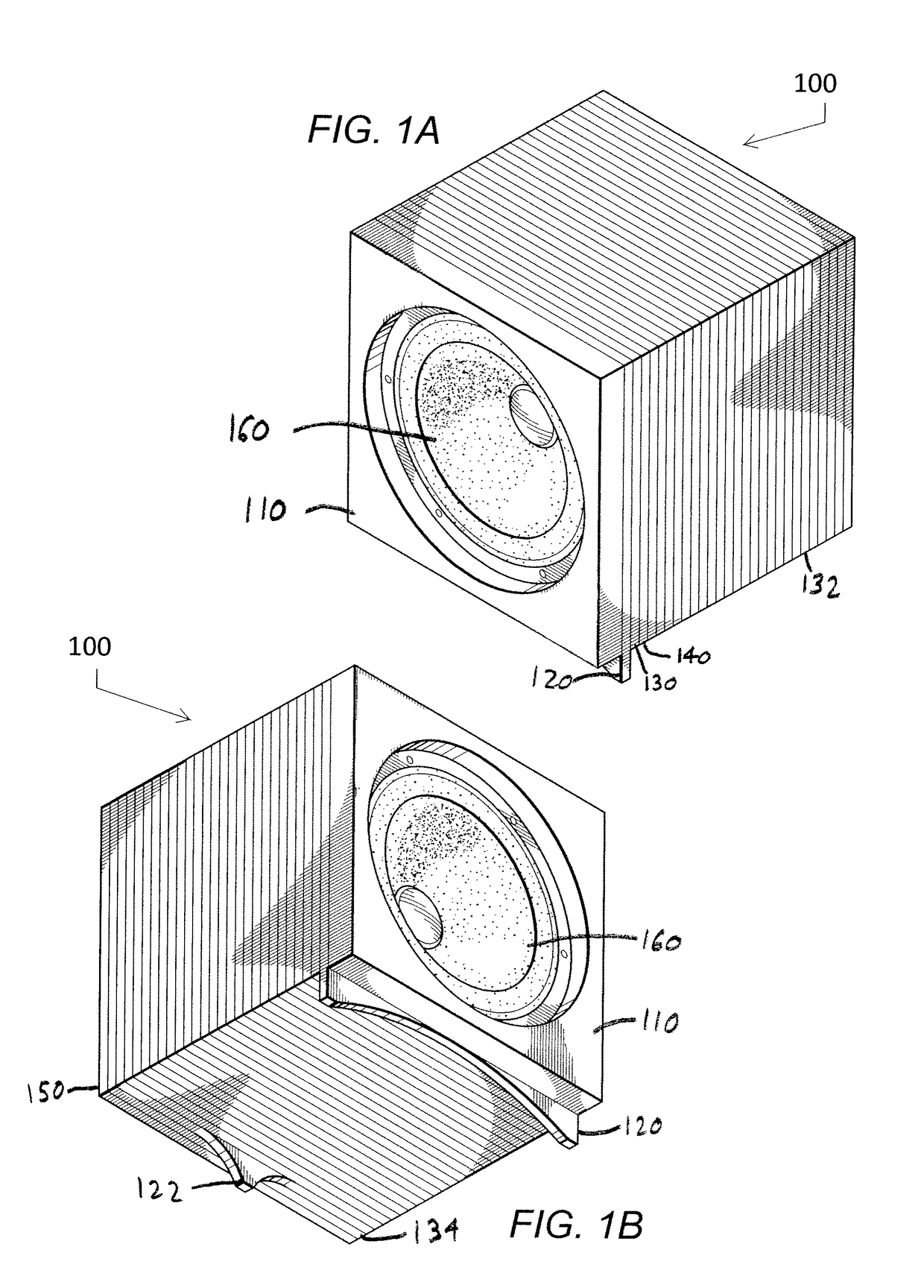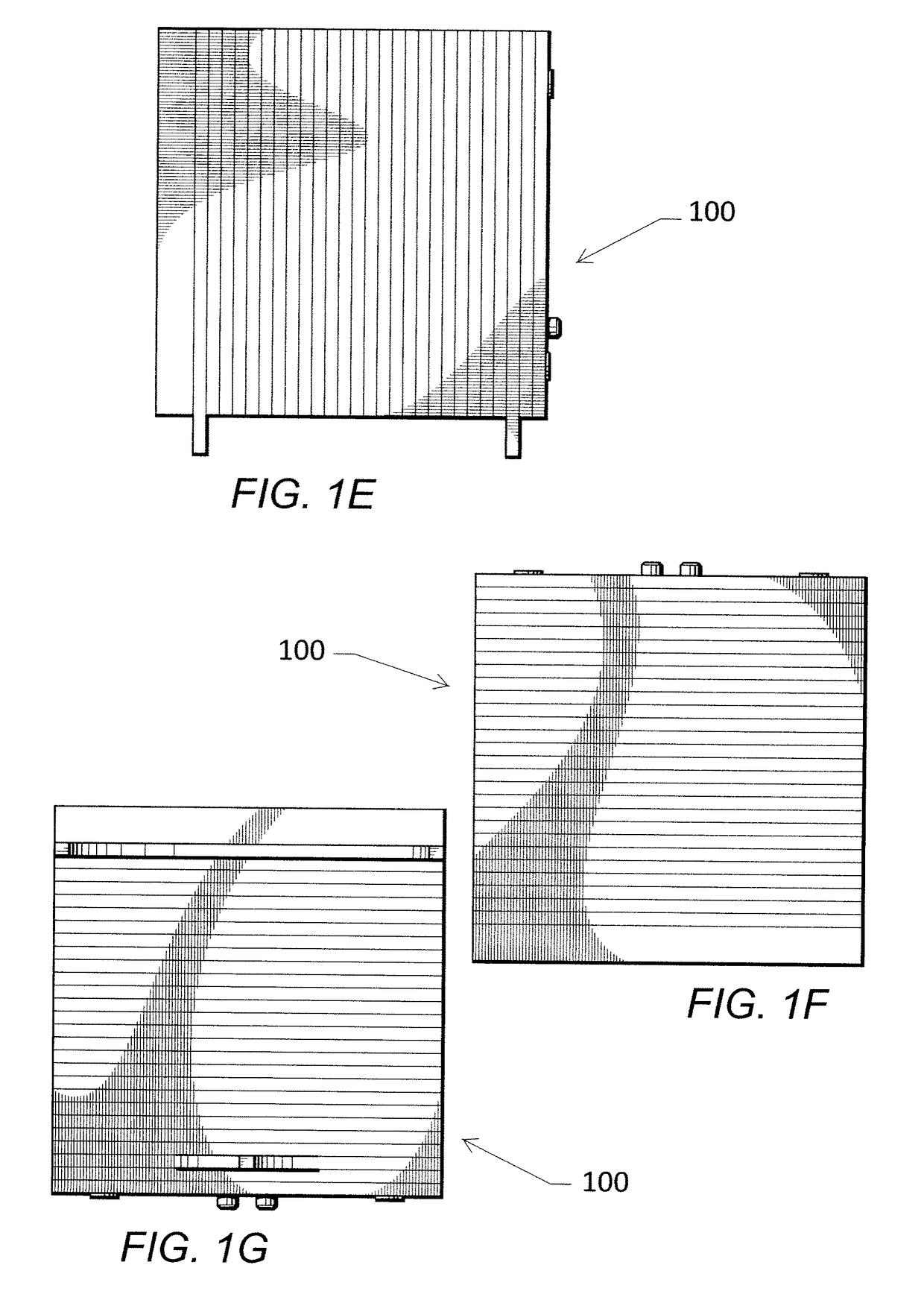Layered speaker assembly
a speaker and layered technology, applied in the field of speakers and speakers, can solve the problems of reducing sound quality, difficult to absorb 3 db energy below 100 hz, and dampening materials that do not have linear energy absorption with frequency, so as to reduce or eliminate internal acoustic cavity resonance, improve the ability to precisely tune the desired audio range, and optimize audio quality and efficiency
- Summary
- Abstract
- Description
- Claims
- Application Information
AI Technical Summary
Benefits of technology
Problems solved by technology
Method used
Image
Examples
Embodiment Construction
[0054]The present disclosure relates to novel and improved speaker assembly and cabinet designs that can optimize and improve audio quality and efficiency. Embodiments according to the disclosure herein can also have the ability to facilitate the precise tuning of audio range, as speaker assemblies and cabinets herein can be linear with frequency or amplitude. Some speaker assembly and cabinet embodiments according to the present disclosure can improve the overall audio output through a novel layered component design, such as by alternating layers of rigid and porous material. By doing so, speaker assemblies and cabinets herein can facilitate aperiodic resonance damping. Embodiments according to the present disclosure can provide a constant audio output at all frequencies and improve the audio output directional pattern. Moreover, speaker assembly and cabinet embodiments herein can vastly improve the overall audio output at all frequencies by reducing or eliminating internal acousti...
PUM
 Login to View More
Login to View More Abstract
Description
Claims
Application Information
 Login to View More
Login to View More - R&D
- Intellectual Property
- Life Sciences
- Materials
- Tech Scout
- Unparalleled Data Quality
- Higher Quality Content
- 60% Fewer Hallucinations
Browse by: Latest US Patents, China's latest patents, Technical Efficacy Thesaurus, Application Domain, Technology Topic, Popular Technical Reports.
© 2025 PatSnap. All rights reserved.Legal|Privacy policy|Modern Slavery Act Transparency Statement|Sitemap|About US| Contact US: help@patsnap.com



